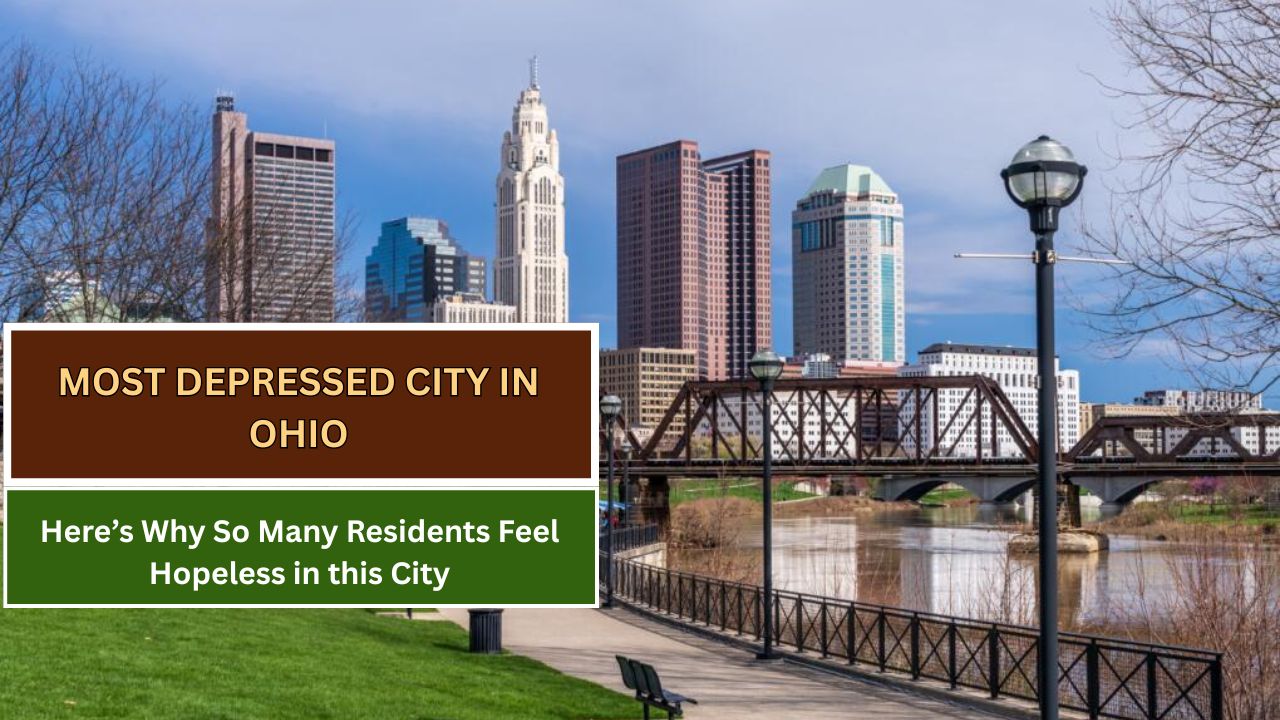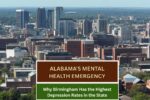Cleveland, OH — Once known as the heart of the American Rust Belt, Cleveland now bears another, more troubling distinction: the most depressed city in Ohio and, according to multiple national rankings, one of the most distressed cities in the United States. New reports reveal that 42% of adults in Cleveland have been diagnosed with clinical depression, a staggering figure that has more than doubled since 2015.
This statistic, published by Signal Cleveland, reflects broader public health challenges affecting the city, including economic instability, housing insecurity, and rising crime rates—all contributing factors to mental health deterioration.
Startling Numbers: A Deep Dive
In 2025, personal finance site WalletHub ranked Cleveland 182nd out of 182 cities for overall happiness. The ranking is based on 29 metrics across three categories: emotional and physical well-being, income and employment, and community environment.
The city also tops the 2024 list of the most stressed cities in the U.S., citing:
- High poverty and unemployment rates
- Low median household income (under $41,000)
- One of the highest violent crime rates in the country
- Foreclosure and divorce rates well above the national average
- A large number of adults experiencing frequent mentally unhealthy days
In addition, CDC data notes that 43% of Cleveland residents report sleeping less than seven hours per night—an indicator closely linked to poor mental health outcomes.
Root Causes: Why Is Cleveland Struggling?
Several overlapping issues are behind Cleveland’s rise in depression and stress rates:
- Economic Decline
Cleveland has been slow to recover from decades of deindustrialization. According to the U.S. Census Bureau, nearly 30% of Cleveland’s population lives below the poverty line, far above the national average. - Housing Instability
Ohio as a state ranks poorly for foreclosure rates, but Cleveland is particularly hard hit. A 2024 Spectrum News 1 report found it had the second-highest foreclosure rate in the country. - Health Disparities
Cleveland’s residents suffer from disproportionately high rates of chronic illness, obesity, and limited access to affordable mental health services. According to Ohio Department of Health, these disparities further exacerbate psychological distress. - Social Disconnection
Community support networks have weakened in recent decades. Social isolation, especially among seniors and low-income individuals, correlates strongly with depression.
Not Just Cleveland: Other Ohio Cities Also Affected
While Cleveland leads in mental health distress, it’s not alone:
- Toledo has a depression rate of 24.4%, and ranks 177th in happiness nationwide.
- Akron is the 8th most stressed city in the U.S.
- Columbus tied for 8th saddest U.S. city according to The Zebra’s 2025 data, with 8.05% of adults experiencing major depressive episodes.
Each of these cities struggles with similar patterns of economic insecurity, inadequate health resources, and housing challenges.
A Public Health Wake-Up Call
Public health experts view Cleveland’s crisis as a stark warning about the long-term mental health impact of structural inequality. Dr. Thomas Gilson, Cuyahoga County Medical Examiner, has cited untreated mental health conditions as a rising factor in the region’s spike in suicides and substance abuse.
The National Institute of Mental Health (NIMH) emphasizes early intervention and expanded access to affordable care as critical steps. Local advocacy groups like NAMI Greater Cleveland are calling for increased funding for community mental health programs and more walk-in crisis services.
What Can Be Done?
Experts suggest a multi-pronged approach:
- Increase state and federal funding for mental health services in underserved areas.
- Promote access to affordable housing and reduce eviction and foreclosure rates.
- Boost employment and job training programs, especially in formerly industrial areas.
- Enhance school-based mental health education and early detection programs.
The Substance Abuse and Mental Health Services Administration (SAMHSA) provides grants and programs to local governments, while individuals in crisis can access support through the 988 Suicide & Crisis Lifeline (988lifeline.org).
Final Word
Cleveland’s ranking as the most depressed city in Ohio is not just a statistic—it reflects a deeply rooted public health emergency. With over four in ten adults experiencing depression, the city faces a mental health crisis fueled by economic, social, and health disparities.
While the challenges are formidable, targeted intervention, greater public awareness, and robust funding can help turn the tide for Cleveland and other struggling communities across Ohio.
This article has been carefully fact-checked by our editorial team to ensure accuracy and eliminate any misleading information. We are committed to maintaining the highest standards of integrity in our content.

Outside of work, he enjoys playing chess, following cricket, and writing short stories. His commitment to integrity and in-depth analysis strengthens OTE News’ mission of providing trustworthy journalism.




